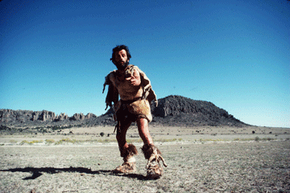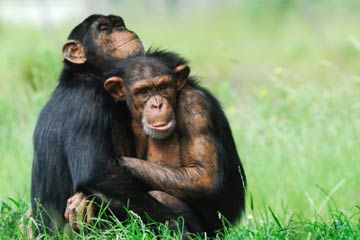Animals may not be able to form words, but they can certainly communicate. Birds use songs and calls, and other animals use a combination of sounds and movements to communicate. Primates have an advanced system of communication that includes vocalization, hand gestures and body language. But even primates stop short of what man has been able to achieve -- spoken language. Our ability to form a limitless number of thoughts into spoken word is one of the things that separates us from our less evolved cousins. While we know that language first appeared among Homo sapiens somewhere between 30,000 and 100,000 years ago, the secret to how language evolved is still unknown, and mainstream theories fall into two distinctly different camps.
One widely held theory is that language came about as an evolutionary adaptation, which is when a population undergoes a change in process over time to better survive. That's where the idea of natural selection comes into play, which is the notion that the specific physical traits of a population make that population more likely to survive its environment -- think the turtle and its shell. The idea here is that language was created to help humans survive. Why? One, humans needed to communicate with each other in order to hunt, farm and defend themselves successfully from the surrounding harsh environment. Being able to communicate using language gave the human species a distinct survival advantage. And two, language was needed for social interaction, according to those who subscribe to the adaptation theory.
Advertisement
In their paper "Natural Language and Natural Selection," researchers Steven Pinker and Paul Bloom theorize that a series of calls or gestures evolved over time into combinations, giving us complex communication, or language. As things became more complicated around them, humans needed a more complex system to convey information to one another. Think of it like this: Early man sees a group of deer he wants to hunt. He grunts a sound to his hunting partner that means "deer are nearby." One day, a storm comes in and the hunter notices that thunder scares the deer away. As a result, the hunter goes hungry until the storm passes. Over time, the same hunter also learns to recognize the warning signs for bad weather -- dark skies and increased wind. Early man realizes that when the sky darkens and the wind picks up, he needs to tell his hunting partner to speed up the pursuit of the deer. Therefore, he comes up with a series of grunts that reference both the deer and the bad weather. That series of grunts was the beginning of an evolutionary adaptation that eventually became language. As humans learned more about how to best survive, they developed a need to communicate these survival methods to their population. And that's the adaptation theory in a nutshell.

